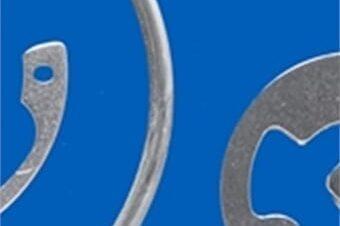

Maximum operating speed – The speed or velocity of the media in the system can affect the performance and service life of the seal. The seal sits on a film of lubricant between the seal lip and the moving surface. The amount of friction depends on the thickness of the lubricating film. The film is squeezed to its minimum thickness when there is no movement, as an increase in velocity causes more lubricant to be drawn between the seal the the moving surface, friction of the system decreases. Maximum operating speed is generally given as ft/min or m/sec. Past the maximum operating speed, the frictional force rises and the seal will begin to wear.
Maximum operating pressure – This is the maximum pressure that the seal is rated for without failure. If the pressure is too high the seal will be forced into the gap which exists between tolerance machined parts at the non-pressure side of the seal. The seal will begin to extrude causing premature failing. Anti-extrusion rings are available which minimize extrusion and maintain reasonable machining tolerances.
Vacuum Rated – The seal can operate in a vacuum.
Operating Temperature – This is the full required range of ambient operating temperature. The operating temperature range ranges for the media in the system. The range for felt is – 65° F to 200° F (- 54° C to 93° C). If the temperature gets to cold for the seal, the material may stiffen and become brittle and then relax again once the temperature heats up. Higher temperatures will cause the material to become elastic and lose compression set. The fatigue of temperature changes can cause a seal to fail so special attention should be paid to the characteristics of the material chose in the temperature range of the system.
Have our catalogue sent to your door

